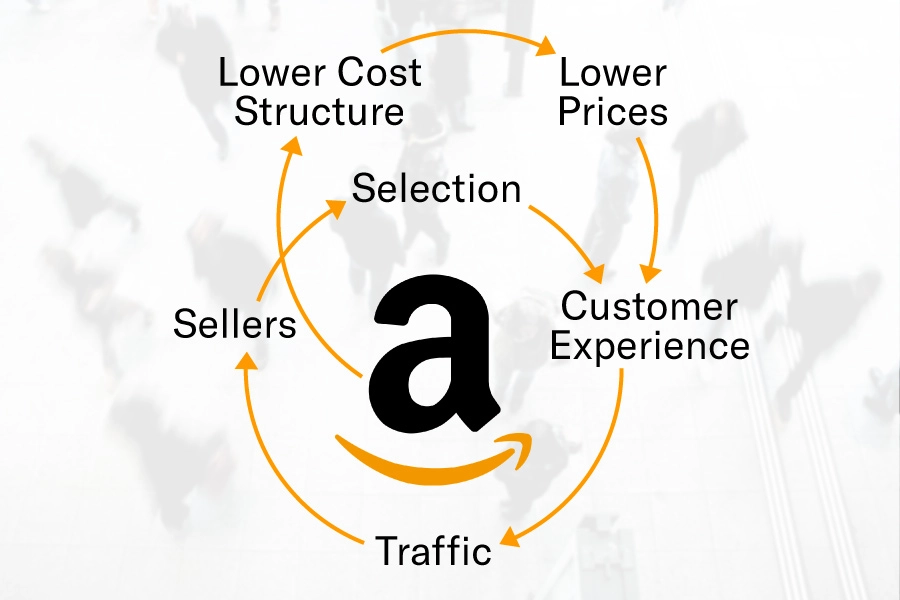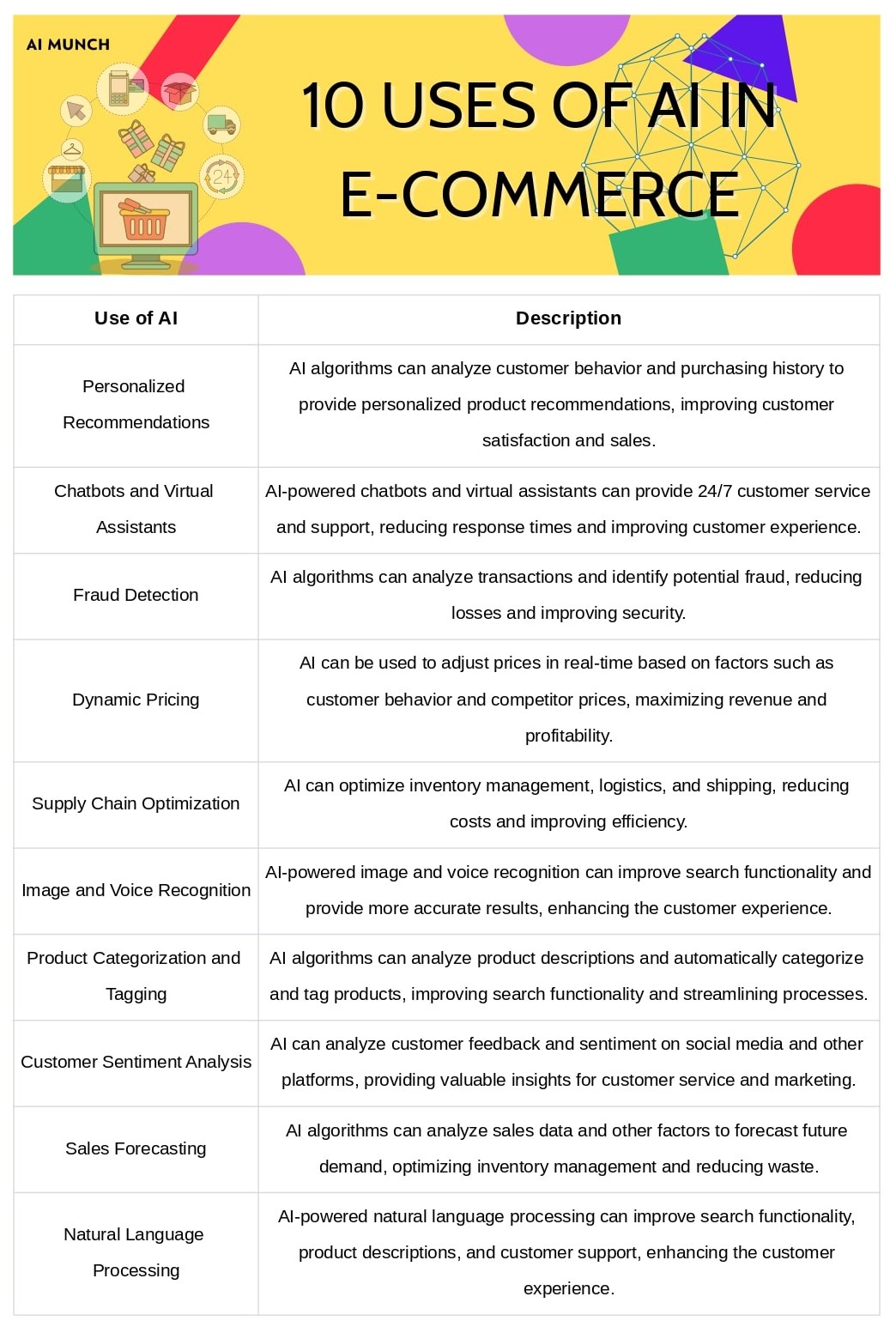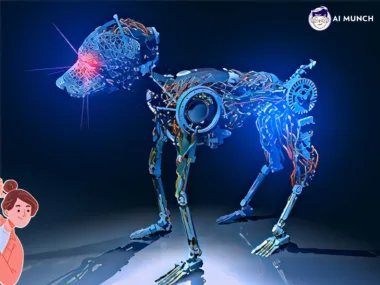I. Introduction
Amazon is a multinational corporation that specializes in electronic commerce and cloud computing. Jeff Bezos started Amazon in 1994, and by 2023, the company’s market value is expected to be around $1 trillion. E-commerce, cloud computing, and digital streaming are just a few of the many services that have made this firm famous. Since the launch of OpenAI GPT-3 and Google Bard, the World is curious about AI. There are many companies such as Amazon, that have been Using Technology for years. But, How does Amazon use AI? We will try to get the answer in this article.
Artificial intelligence (AI) researchers try to figure out how to program machines to do things that usually require an intelligent person. The healthcare sector, the financial industry, the transportation sector, and the manufacturing sector are just some of the many that can benefit from AI. Common types of artificial intelligence include machine learning, Natural Language Processing (NLP), and Computer Vision (CV).
II. Amazon’s Use of Artificial Intelligence
A. When did Amazon start using AI?
Since at least the early 2000s, Amazon has employed various forms of artificial intelligence. Amazon’s recommendation system, which has been around since 2003, is one of the company’s earliest uses of AI. Since then, Amazon has put a lot of money into research and development for AI. The company now has a wide range of products and services that use AI.
B. Top 8 areas where Amazon uses the flywheel approach for AI integration
Amazon employs a “flywheel” strategy to implement AI across the board. In this strategy, data is used to improve the customer experience, which leads to more sales and income, which in turn leads to more data that can be used to improve the customer experience even more. Amazon employs this strategy in the following seven areas:
- Recommendations and Personalization: Amazon uses AI to make personalized product recommendations to customers based on their browsing and purchase history.
- Search: Amazon uses AI to improve the accuracy and relevance of search results on its website.
- Alexa: Amazon’s virtual assistant uses AI to understand and respond to natural language queries.
- Amazon Go: The cashierless stores use AI to track customer behavior and make shopping more efficient.
- Robotics: Amazon uses AI-powered robots in its warehouses to improve efficiency and productivity.
- Fraud Detection: Amazon uses AI to detect and prevent fraud on its platform.
- Supply Chain Management: Amazon uses AI to optimize its supply chain and reduce costs.
- Amazon Web Services (AWS): Amazon’s cloud computing platform offers a range of AI services, including machine learning, natural language processing, and computer vision.
Overall, AI is a critical component of Amazon’s operations, helping the company to improve customer experience, increase efficiency, and drive sales and revenue.

III. Amazon’s AI-Powered Products and Services
A. What is Amazon’s AI called?
Amazon’s artificial intelligence system goes by the name Amazon AI. Amazon Web Services (AWS) offers a variety of artificial intelligence (AI) services, such as machine learning and natural language processing (NLP).
B. Alexa: How it works and its benefits
Amazon’s Alexa is an AI-powered virtual assistant that can process and respond to questions in a natural language. The AI algorithms interpret the user’s spoken query, process it, and return an answer. Alexa’s benefits include the following:
- Making it easy to control home gadgets and apps without using your hands.
- Giving personalized suggestions.
- Making it easier for people with physical disabilities to use.
C. Amazon Go: How AI is used in the cashierless store
Amazon Go is a network of cashier-less convenience stores that employs artificial intelligence to monitor shopper habits in order to optimize shopping time. The stores automatically charge customers’ Amazon accounts when they leave by using a combination of computer vision, sensors, and deep learning algorithms to track when customers pick up or put down items. When it’s in place, customers won’t have to wait in checkout lines or deal with cashiers, making shopping much more accessible.
D. Amazon Recommendations: Personalized suggestions based on customer behavior
Amazon’s AI uses information about what customers look at and buy to make unique product suggestions for each user. This is done by putting together algorithms for collaborative filtering, content-based filtering, and deep learning. These algorithms look at vast amounts of data to find patterns and make accurate predictions. You can improve customer retention, conversion rates, and happiness by giving each user a unique set of recommendations.
E. Amazon Web Services (AWS): Providing AI services for businesses
Its cloud computing platform, Amazon Web Services (AWS), has everything you need regarding artificial intelligence (AI) services. These services allow companies to use AI in their processes without forking over a tonne of cash for new hardware or software. Increases in customer satisfaction, productivity, and earnings are just ways AWS AI services pay for themselves.
IV. The Benefits of Amazon’s AI
A. Improved Customer Experience
Including Faster and more accurate recommendations and responses
AI Marketing is getting trendy. As a result of Amazon’s use of artificial intelligence, the company can provide better service to its customers through faster and more precise recommendations and responses. Because of this, we’ve seen an uptick in both conversion rates and revenue and an improvement in customer satisfaction and loyalty.
B. Enhanced Efficiency
Including Streamlined processes and reduced costs
Additionally, Amazon’s use of AI has improved productivity by standardizing procedures and decreasing overhead. In Amazon’s warehouses, for example, AI-powered robots have significantly increased output and cut the time it takes to process orders.
C. Increased Sales and Revenue
Including Targeted marketing and improved customer retention
Lastly, Amazon’s sales and income have increased thanks to AI, which has helped them market more effectively and keep their customers. Amazon uses AI to analyze customer data for better predictions and provide more relevant, personalized recommendations. By improving the whole customer experience, Amazon can get more customers and raise its lifetime value.
V. The Challenges of Amazon’s AI
A. Privacy Concerns
Including Handling and storing customer data responsibly
Of Course, Artificial Intelligence has dark sides. Responsible data handling and storage presents a significant challenge for Amazon in the realm of AI. Amazon is using AI in more and more of its business processes, so the company needs to take steps to protect customer information and stop it from being used in evil ways. To address these worries, Amazon has implemented various policies and technologies, such as encryption, access controls, and data anonymization.
B. Algorithmic Bias
Including Addressing potential biases in AI algorithms
Amazon also has to deal with another AI problem: algorithmic bias. If AI algorithms aren’t carefully made and tested, they could worsen prejudice and inequality. Amazon is trying to solve this problem by adding more diverse training data and more transparency about making decisions. Amazon also has a team of data scientists and engineers who work to find algorithmic bias and fix it.
VI. AI in Amazon’s Warehouses
A. How does Amazon use AI in warehouse operations?
Amazon’s warehouses use artificial intelligence (AI) to boost efficiency and output. Robots powered by artificial intelligence can be used to move and sort goods, and algorithms based on AI can make it easier to keep track of stock and fill orders. Amazon’s AI-enabled robots have sped up, and enhanced order fulfillment accuracy and can move up to 600 pounds of stock at once.
B. Benefits of using AI in warehouses
Amazon’s use of AI in its warehouses has increased productivity, decreased labor costs, and enhanced worker safety, among other advantages. Robots with artificial intelligence can handle menial, labor-intensive jobs so that humans can focus on more valuable work. Artificial intelligence algorithms can also help streamline inventory management and order fulfillment, which has the dual benefit of cutting costs and boosting customer satisfaction.

VII. Conclusion
Overall, Amazon is way ahead of the curve when implementing AI into their business practises and providing a better customer experience. Amazon has put AI into every part of its business, from chatbots to stores without cashiers to robots in the warehouse. Even though there are obstacles, like privacy worries and algorithmic bias, Amazon has taken measures to address these concerns and ensure ethical AI use.
Future of AI in Amazon
Continued development and integration of AI technologies
Artificial intelligence (AI) is already playing a crucial role at Amazon and will continue to do so in the future. Amazon is dedicated to investing in R&D and implementing AI technologies to advance business processes and enrich the shopping experience for customers. Amazon is positioned to take advantage of AI’s increasing sophistication and prevalence to propel growth and innovation sustainably.
FAQs
Amazon uses a variety of automation technologies, including robots, AI, machine learning, and computer vision. These technologies are used to optimize warehouse operations, improve delivery speed and accuracy, and enhance the customer experience.
Amazon’s first robot was the Kiva System, which it acquired in 2012. The Kiva System is a fleet of robots that work together to move products around the warehouse, reducing the need for human workers to carry out these tasks.
Yes, Amazon uses a variety of robots and other autonomous vehicles to deliver packages. Small delivery robots can move around on sidewalks, drones can fly to faraway places, and self-driving delivery vehicles can carry more than one package at once.
As of 2023, Amazon has over 500,000 robots across its global operations. These robots are made to do many different things, like move products around the warehouse or pack and ship orders.
Sparrow and Proteus are Amazon’s new intelligent robotic systems that move products around before they are packaged. This is a big step forward in technology that helps their employees.
Do you want to read more? Check out these articles.











3 comments